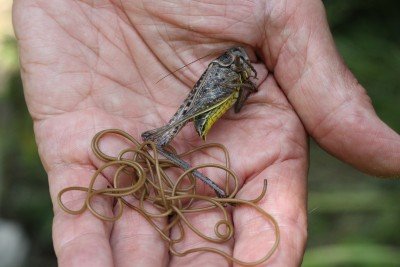
So, what exactly are wolf worms? These larvae of the *Cuterebra* fly will latch onto small mammals like rodents or rabbits, turning them into temporary homes. While this might sound like a scene from a horror movie, it’s a fascinating aspect of the animal kingdom that shows how interconnected life can be—sometimes to the detriment of the host. Let’s dive deeper into the world of wolf worms and explore their effects on small mammals in the wild.
What Are Wolf Worms?
Wolf worms aren’t actually worms in the traditional sense. They’re the larvae of the *Cuterebra* fly, which are often found in North America. The adult flies lay their eggs in the fur of small mammals. After hatching, the larvae burrow into the host, creating a cozy little spot for themselves. You might think of it like a housewarming party gone awry—one that takes over the entire apartment!
These larvae can grow quite large, even reaching sizes of up to an inch. This makes them pretty noticeable, often causing concern for anyone who spots them on their furry friends. It’s a real battle of survival; the small mammal is stuck with this unwelcome tenant, while the wolf worm gets to thrive at its expense.
How Do Wolf Worms Infect Small Mammals?
The infection process begins when a host mammal unwittingly brushes against an area where adult *Cuterebra* flies have laid their eggs. This can happen in areas with dense vegetation or where small mammals are commonly found. The eggs hatch, and the tiny larvae latch onto the fur of a suitable host, usually when the animal is grooming itself.
Once the larvae are attached, they make their way into the skin through small openings. From there, they start to grow and develop, feeding on their host’s body. It’s a strange relationship where one party is getting a free meal, but it often leads to various health complications for the host. You might wonder, why do these flies do this? It’s just their way of ensuring the next generation has a warm place to grow.
The Impact of Wolf Worms on Small Mammals
Having wolf worms isn’t just an inconvenience; it can severely affect a small mammal’s health. These parasites can cause **tissue damage**, resulting in infection, inflammation, and even abscesses. Imagine having an unwelcome houseguest that not only takes over your home but also starts damaging the furniture—this is what happens to the host’s body.
Additionally, the presence of these larvae can lead to **stress** and **anxiety** for the small mammal. Think about how you might feel if you suddenly found yourself sharing your space with something that’s eating away at your comfort! Animals may become more reclusive, avoid their usual habitats, and struggle to find food due to the discomfort caused by the infestation.
Symptoms in Infected Mammals
If you ever spot a small mammal with a wolf worm infestation, there are a few signs to look for. One of the most visible symptoms is a **lump** or swelling under the skin, often accompanied by **hair loss** in the area. You might also notice the animal scratching or biting at the site to alleviate discomfort.
Infected mammals can act quite differently, too. They might show signs of **lethargy**, spending more time alone and less time foraging for food. If the infestation gets severe, the animal may even develop a secondary infection, which can further complicate things. It’s one of those cases where a small problem can quickly escalate into something much bigger—like ignoring a minor leak in the roof until the whole place starts to crumble.
How Do Small Mammals Cope?
Despite the challenges posed by wolf worms, small mammals have some tricks up their sleeves. They often try to groom themselves more frequently to remove any visible larvae. This behavior is pretty instinctual; it’s like when you notice a pesky fly buzzing around and you swat at it!
Surprisingly, some mammals also have natural immunity to mild infestations. Their bodies might be able to tolerate a few larvae without suffering severe consequences. It’s a bit like building resilience over time, much like how humans develop immunity to certain illnesses. The key is finding a balance between thriving in the wild and managing these tiny invaders.
Can Wolf Worms Affect Other Animals?
While we focused on small mammals, wolf worms aren’t exclusive to just them. They can also infest larger animals, including pets like cats and dogs. It’s crucial for pet owners to be aware of the signs and seek veterinary help if they suspect an infestation.
Different animals respond differently to these parasites. For instance, while a small mammal might be able to tolerate a few wolf worms, a larger animal might experience more severe health issues. This variation can help paint a broader picture of how wolf worms influence different species within the ecosystem.
Wolf worms remind us that nature is a complex web of interactions, often with unexpected twists. While these tiny parasites can be harmful to small mammals, they also play a role in the ecosystem, contributing to the natural cycle of life and death.
Understanding the impact of wolf worms helps us appreciate the delicate balance in wildlife. It’s a harsh reminder of survival in the wild, where every organism has a role to play—even if it means being an unwelcome tenant. So next time you hear about wolf worms, you can think of them not just as pests but as a fascinating part of nature’s story.
